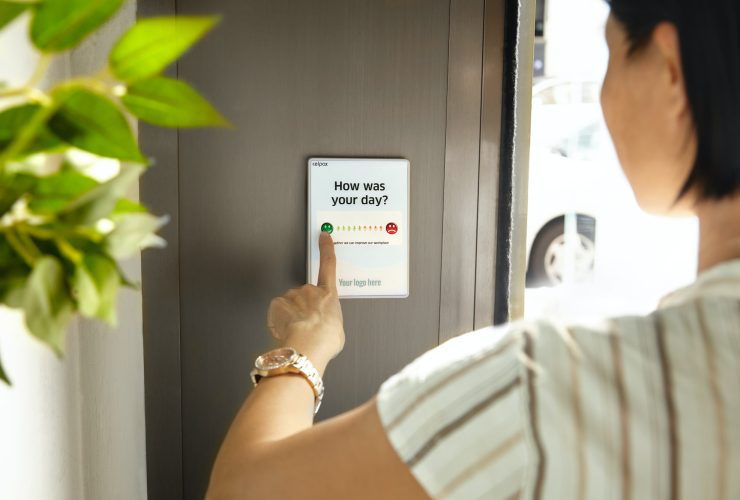Common Google Ads Mistakes, Part 2: Google Ads Account Structure
One of the most common mistakes people make with Google Ads is not structuring their accounts properly for the best results. Today on the show, we’ll examine how to optimize your Google Ads account structure and get better results with advanced bid strategies.
Episode Transcript: Common Google Ads Account Structure Mistakes
What’s up everybody, and welcome to another episode of the Medical Marketing Podcast from Messenger – the show where we give you actionable tips and advice to help improve your practice marketing, grow your revenue, and take patient experience to the next level. I’m your host, Crawford Ifland, and today we’re going to be discussing how to optimize your Google Ads account structure for optimal performance and get better results with advanced bid strategies.
But before we dive in to how to do it right, we have to take a look at the mistakes people make.
Mistake #1: A Poorly Structured Account
When it comes to mistakes related to account structure, we typically see a few things. Among these are multiple campaigns with no clear objective, or campaigns that are advertising the same thing.
Another common thing we see is one campaign that serves as a “bucket” for everything – there are multiple goals, multiple products and services that are being advertised, etc. This is a big mistake, because you’re essentially competing against yourself.
Another big mistake is only having one Ad Group per campaign. This isn’t always a mistake – it depends on what you’re advertising for – but in general, this isn’t a good idea. You should aim to have at least two or three Ad Groups per campaign.
The final mistake in this category is not having enough ads per Ad Group. Many people think that they can create an Ad Group, throw one ad in there, and they’re good. In reality, however, you want to A/B test your ads and give patients multiple chances to convert.
Mistake #2: Using Underperforming Bid Strategies
Mistake number two is using underperforming bid strategies for your campaigns. Google offers a number of bid strategies for your campaigns, and with each, you can select what you want to optimize for.
Now, when I say “underpowered strategies”, I don’t mean to say that they’re entirely ineffective – I just mean that there may be other bid strategies that can be more effective. Underpowered strategies include plain ol’ Cost Per Click or Enhanced Cost Per Click. These bid strategies don’t utilize Google’s Machine Learning, so by using these strategies, you’re missing out on valuable data.
Another mistake with bid strategies is using more advanced bid strategies when you don’t have enough data in your campaign yet. This includes using Maximize Conversions when you’re just getting started, as Google’s algorithms don’t have enough data to optimize for conversions yet – you need to fill your account with data before Google can optimize for this result.
The final mistake you can make with bid strategies is using Target Cost Per Action to drive conversions…but setting the CPA too low based on the numbers you’ve been seeing. Yes, a conversion at $10 is more profitable than a conversion at $100, but if you’ve been driving conversions at $100, your conversions will drop off a cliff.
Yes, the profit on each conversion is better, but if your conversions drop to zero, your total profit declines drastically. That’s a mistake you don’t want to make.Mistake #3: Not Utilizing All Google Ads Features
Mistake number three is not utilizing all of the features Google Ads offers. This mistake includes omitting extensions, site links, structured snippets, or product attributes if you’re advertising specific products.
This mistake reduces the amount of space your ads take up on Google – reducing your “real estate”, per se – and makes your ads looks like everyone else’s ads. They don’t stand out anymore, which can reduce your click through rates.
Another mistake in this category is to not include Call Only Ads in your account. Granted, calls won’t be applicable to every advertiser, but Call Only Ads are a great way to capture more mobile search traffic. Mobile traffic is on the rise, so this can be a great way to capture new leads.
Mistake #4: Not Bidding on Your Own Brand
Our final account structure mistake is not bidding on your own name in Google Ads. We discussed this in Episode 14, and it’s a common mistake. This mistake happens because advertisers are reluctant to spend money on their own name, especially if they’re already appearing high in organic Google searches.
However, this is a mistake, especially considering that the CPA for these campaigns is low, and they can drive a lot of conversions. You want to remain in contention whenever a competitor is mentioned, too, so it’s important to bid on your own name and competitors’ names. While it does cost some money, not bidding on these terms is a mistake, because your conversions will drop.
How to Optimize Your Google Ads Account Structure: What to Do Instead
So now that you know the biggest mistakes in terms of Google Ads account structure, we can talk about how to fix them.
First up, how to structure your account for optimal performance.
How to Structure Your Account for Optimal Performance
If you want to structure your Google Ads account for optimal performance, you should structure your campaign like a tree.
Campaigns are designed for overall advertising objectives, so you should have one campaign per objective.
Within campaigns, you should use Ad Groups to advertise different products and services, or even different attributes of those products or services.
Within Ad Groups, you should have at least 3-5 ads within each Ad Group. This will give you the best chance to A/B test headlines, descriptions, landing pages, and extensions like site links and structured snippets. Utilizing Responsive Search Ads can help here, too.
So there you go:
- 1 campaign
- 2-3 Ad Groups within that campaign
- 3-5 ads within each Ad Group.
Keep that Google Ads account structure, and you’ll be optimized for better results.
Use the Right Bid Strategies
Next up, you need to know which bid strategies to use for each campaign.
As we mentioned before, CPC and eCPC can be effective, but there are often better bid strategies available.
Assuming you have enough data, Maximize Conversions can be more effective. This is because you can leverage Google’s Machine Learning algorithms to dynamically display the ads that are most likely to convert. Google can show your ads to patients who, based on their past behavior, are most likely to convert.
Assuming you have a lot of data – and fairly rigid advertising goals on cost, profits, and the like – Target Return on Ad Spend and Target CPA can be effective strategies. All of these strategies utilize Google’s Machine Learning so you can leverage their artificial intelligence to get better results. However, you want to be careful with these, because setting targets that are too low compared to your historical results will tank your results.
The Best Google Ads Features You Need to Utilize
Next, let’s examine the best Google Ads features you need to utilize.
As we mentioned, Calls Only ads can be effective to capture mobile traffic – that’s pretty easy. Using extensions like site links, structured snippets, call out snippets, and product attributes can increase the amount of real estate you take up on Google Search, which can not only make your ads larger, but makes the more attractive and can improve your Clickthrough Rates.
At the end of the day, these are 30-second fixes that are incredibly easy to implement, but they can make a world of difference.
How to Effectively Bid on Your Own Brand
And finally, a word on bidding on your own brand. As we mentioned in Episode 14, this is a best practice for Google Ads – you always want to buy that #1 spot with Exact Match keywords when patients are searching for your brand…even if you rank well.
Bidding on competitors’ names is another good idea. You want to be in contention whenever a competitor’s name is mentioned, so spending a little bit of money on these is also a great idea. Your conversions and Cost per Acquisition for competitors won’t be as good as they are for your own brand name, but it’s worth spending a modest amount to ensure you’re always in contention.
So there you go – these are some of the most common mistakes that have to do with Google Ads account structure and features that can boost your results and benefit your bottom line.
Recap
So, let’s recap what we’ve learned today:
- Be sure to structure your account for optimal performance. 1 Campaign, 2-3 Ad Groups within each Campaign, and at least 3-5 Responsive Search Ads (and at least 1 Call Only ad) within each Ad Group.
- Be sure to use the right bid strategies for your campaigns. When you’re first starting out, you can use CPC or eCPC as bid strategies to control costs, but as you fill your account with data, you can switch to automated bidding strategies like Maximize Conversions to leverage Google’s Machine Learning algorithms and get better results.
- Be sure to use all of the features that Google Ads offers. Utilizing things like extensions only takes 30 seconds, but it offers an excellent return. There’s no good reason not to use them.
- Make sure your bidding on your own brand name to capture that #1 spot, even if you rank well in organic search.
Next Week…
That’s all for today’s episode of the Medical Marketing Podcast.
Next week, we’ll continue our look at common Google Ads mistakes with a conversation about Conversion Tracking – how to use it properly on your website and Google Ads, and how to make sure you’re getting the most accurate data possible so you can make the right decisions.
As always, we’ll have a link to the show notes in the description, and don’t forget to browse our website at www.messenger.md – we’ve got tons of great resources on how to improve your practice marketing, grow revenue, and take your patient experience to the next level.
For Messenger, I’m Crawford Ifland – see you next week!







